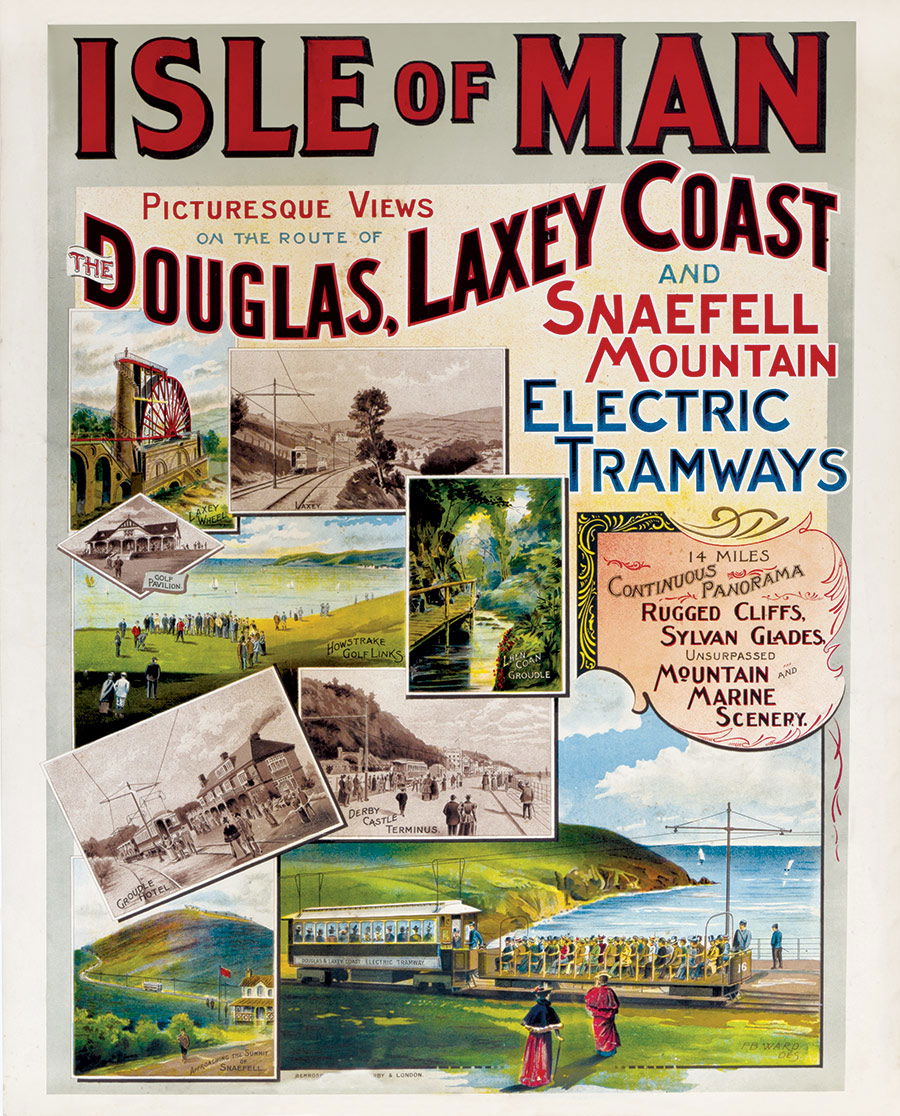A Very Brief History of the Manx Language
From monks to Vikings to tourists, the Manx language has (almost) survived against the odds.

The native language of the Isle of Man has undergone a rapid decline and inspiring revival. Since the death of its last native speaker in 1974 it has been brought back from the dead and is now part of a vibrant language community.
Manx is a Gaelic language closely related to both Irish and Scottish Gaelic. It was first brought to the shores of the island by Irish monks and merchants in the fourth and fifth centuries AD, as Christianity spread northwards. The monks founded ecclesiastical settlements and carved ogham stones and, in so doing, established Gaelic as the language of the island, replacing the pre-existing Brythonic language.
Like much of northern Europe, the Isle of Man did not escape the Viking invasions. In fact, the Vikings founded major settlements on the island and made it the centre of a kingdom that stretched to the Hebrides, Orkney and Shetland. Yet, although the Norse left their system of government and beautiful stone crosses, their rapid assimilation into the existing community meant their language left little impact. The exceptions are a few place names, such as ‘Snaefell’, which comes from the Old Norse for snowy mountain, and ‘Laxey’, Old Norse for salmon river, and a few specialised terms to do with seafaring.
Manx began to emerge as a distinct language from Irish and Scottish Gaelic when the last king of Mann died in 1265 and the island came under the control of Scotland. It passed between England and Scotland until in 1405 Henry IV gave it to Sir John Stanley, Lord Lieutenant of Ireland and an influential Lancastrian supporter. Connection with the rest of the Gaelic-speaking world was cut and the island became part of the English-language administration.
Although Manx was the language of everyday life, official documentation was through English or Latin, meaning that Manx was left as an unwritten language for much of its history. There is no evidence for Manx having been written down until after the Reformation. The earliest Manx texts are religious in nature, written by clergy in an attempt to educate the population in its mother tongue about the established religion. The first recorded writings date to 1610 and the first book to be published in the language was only in 1707.
Manx truly began to decline as a community language in the 19th century with the advent of mass tourism. The Isle of Man was one of the first widely popular tourist destinations, first for the wealthy and later the working classes of industrial England. At the peak of tourism at the start of the 20th century, over 600,000 people would visit the island in a single year, when it had a local population of about 50,000. For comparison, today the island has about 80,000 residents and about 120,000 tourists each year.
The only way to succeed in the most important economic industry was to speak English. Manx came to be associated with ignorance and poverty and English provided a path to a better life. These attitudes, combined with emigration from the poor and remote areas where Manx was most commonly spoken, contributed to its rapid decline within a generation or two. In a pattern reflected in many other places across the Gaelic-speaking world, the death of Manx produced typical households where the grandparents spoke only Manx, parents English and Manx bilingually and the children only English.
In the 19th century, mirroring the revival that was taking place in Ireland, interest in Manx language and culture rose despite the plummeting number of speakers. Yn Çheshaght Ghailckagh, the Manx Language Society, was founded in 1899 and there was a renewed interest in recording the speech of the dwindling native speaking community, despite indifference from the Manx government. In fact, it was the Irish Taoiseach Éamon de Valera who sent over equipment in 1948 to record the last elderly native speakers of Manx. Although the modern language revival started in the 1960s with the tireless work of figures such as Douglas Faragher and Brian Stowell, the death of the last native speaker, Ned Maddrell, in 1974 appeared to be the final nail in the coffin for the Manx language and it was declared a dead language.
Despite the lack of native speakers, there has always been a small cohort of committed speakers and learners of Manx. Recent efforts to continue the revival have been encouraging. Promotional bodies such as Culture Vannin have implemented strategies used by other minority languages. Adult classes are popular and many students choose to learn Manx in schools. Most impressively, the Manx-medium primary school Bunscoill Ghaelgagh opened in 2001, giving children the opportunity to learn solely in Manx. Technology, too, has made Manx much more accessible to learners, both on the island and internationally. Manx is becoming an important part of the nation’s identity, as something unique to the island that connects the past to the present.
Katie Murphy is a History teacher and writer who lives on the Isle of Man.